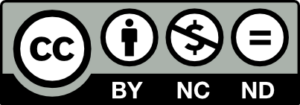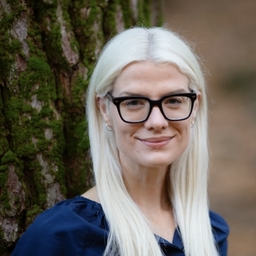Emily Donovan has a mission: “Make the polluters pay.”
The mother of twins took on the role of activist when she started fighting for her North Carolina community in 2017. Her main target: PFAS “forever chemicals,” which do not degrade and at even low levels have been linked to a wide range of human health risks, including fertility issues, immune interactions, cancer, liver damage, thyroid disease, asthma, and more.
A recent report from the nonprofit Waterkeeper Alliance found that 98% of waterways in the United States contain per- and polyfluoroalkyl substances, commonly known as PFAS. One of the country’s most polluted rivers, according to the report, sits at the heart of Donovan’s own Cape Fear community in North Carolina.
After the first news of this contamination broke in 2017, Donovan and other local activists came together around a kitchen table and founded Clean Cape Fear, a community action group focused on fighting the polluters of the Cape Fear River and holding elected officials accountable to restore and protect the region.
Since those early days, Donovan has made numerous strides against PFAS, most notably in leading the dialogue that led the EPA, under the Biden administration, to issue the first nationwide regulations for PFAS in drinking water in April 2024. For this work, the United Nations named Donovan a defender of human rights, recognizing her unwavering commitment to fighting PFAS contamination on a national level.
Now, under President Trump, the EPA has rescinded those regulations that took so much work to set in place.
“I am sad, and I am frustrated,” says Donovan. “But after the announcement came out, I’m settled and resolved. That sadness has settled into anger, which is a very good fuel for motivation. Stupidest thing they could have done is to make people angry.”
Trump Aids Polluters
On April 10, 2024, the EPA set out legally enforceable limits — called “maximum contaminant levels” — for six PFAS chemicals in drinking water: PFOA, PFOS, PFHxS, PFNA, GenX (HFPO-DA), and PFBS. Under these rules, PFOA and PFOS were limited to 4 parts per trillion (ppt); PFNA, PFHxS, and GenX were limited to 10 ppt, and PFBS was regulated under the federal “hazard index,” meaning it does not have a fixed parts-per-trillion number but is considered to add risk to human health if it’s in drinking water. Public water systems had until 2029 to fully meet these federal requirements, as PFAS regulations often differ from state to state.
What was considered a historic move is now being dismantled with breathtaking speed. The regulations instituted by the Biden administration were withdrawn by the Trump administration on its second day in power.
The EPA’s most recent change rescinded regulations covering four of the six common PFAS contaminants while keeping regulatory compliance for PFOA and PFOS, both of which have been retired from commercial use.
Regulations on GenX — the chemical that polluted Cape Fear — were quietly canceled under this change.
Several nonprofits, including the NRDC and Earthjustice, have filed lawsuits challenging the new federal PFAS drinking water standards and the hazardous substance designations, arguing they violate the Safe Drinking Water Act, a safety standard set in 1974. Earthjustice represents Cape Fear residents in both cases.
“I believe this is an illegal move,” says Donovan.
View this post on Instagram
Earthjustice and NRDC recently issued a press release pointing out the “anti-backsliding” provision in the Safe Drinking Water Act, which should have prevented the EPA from weakening existing standards. Despite this provision, NRDC claims that the recent rollback in PFAS regulations is doing just that: weakening federal standards that were already set in place.
Donovan says the recent deregulation has created confusion on the local level about who should pay for decontamination costs. She argues that the companies that polluted the waterways should be the ones paying for the cleanup, not the local municipalities.
“If the EPA is going to acknowledge the law,” Donovan says, “then what they’re doing right now is really stalling and confusing communities and making it more difficult for utilities to make a good decision, because they’re creating this unnecessary uncertainty.”
She also notes that this distraction takes attention off of new PFAS chemicals, such as PFPrA, that are showing up at extremely high levels in the area’s water source — threatening residents’ health and already costing them money.
“The water bills keep going up for a problem that we didn’t create,” says Donovan. “This is expensive, and it should not be the burden of the utilities. It should be the burden of the polluters, and should be stopped at the source. But we’re not seeing this administration address those concerns.”
Instead of a unifying fight alongside utility companies, Donovan finds clean water activists at odds with them.
“We’re not seeing the water utility associations address those concerns either. We see them standing opposite us with the chemical industry on lobbying day,” she says.
Origins of an Activist
In 2017, the Wilmington Star-News broke the news that the Fayetteville Chemours factory was manufacturing GenX and had been polluting the Cape Fear River for decades. Donovan says that residents later discovered that the company was also inadvertently producing it as an industrial byproduct, discharging GenX into their wastewater stream, which ran into the river.
“No one in America was saying anything about GenX,” says Donovan, “so everyone was upset and terrified, and then Chemours came to town, and it was a closed-door meeting. It was very obvious that they were controlling — controlling the narrative, controlling the information.”
According to Donovan, tests showed high amounts of GenX found in the finished water, which is the final product in the water treatment process, from the Cape Fear Public Utility Authority. So she submitted a water sample from her children’s elementary school in Brunswick, North Carolina, which sits right between the Chemours plant and the Cape Fear region, an hour each way. Results showed that the elementary school in Brunswick had the highest PFAS levels out of all the areas tested.
Studies have since shown GenX to be one of the most toxic of the PFAS chemicals, even more so than the retired legacy chemicals they replaced.
A Sacred Charge
At times when she could feel alone or overwhelmed by the scope of the situation, Donovan draws on advice she received from clean water advocates Erin Brockovich and Mark Ruffalo: “No one is coming to save you. You have to save yourself.”
She remains determined, though, and uses her background in communications and political science to effectively reach people regarding their rights as citizens.
Her friend Jessica Cannon, co-founder of Clean Cape Fear, calls her “the activist of activists.”
Cannon praises Donovan’s strong moral compass as the driving force in all she does for her family and community. She notes that Donovan draws from her work as a youth group coordinator and communications manager for a progressive church as part of her mandate “to protect God’s green Earth.” Donovan’s strong faith is apparent to all who meet her, even in email, with her signature featuring a scripture urging people to love one another.
Still, Donovan remains tenacious when coming up against giant chemical corporations. “When people tell her no,” says Cannon, “it’s like waving a red flag in front of her.”
Even though their work has resulted in new research studies and regulations, Donovan says it hasn’t been easy. “Everything that we have achieved, we feel like we’ve had to fight for it every step of the way,” she says. “We’re not looking for credit, but we want it to be documented that we had to fight for it because we want other communities to know no one’s coming to give you this. We had to fight every step of the way to get access to this stuff.”
While this fight against chemical companies is long and arduous, Donovan notes that it’s important to consider that states and local communities still have time to course-correct.
“I want to make that distinction very clear,” she says. “States still have the power to issue permits that control PFAS releases. If they choose not to do it, they’re benefiting and aiding the polluters by forcing communities to clean up PFAS pollution in the tap water that shouldn’t be there from the start.”
Local Contamination, Worldwide Impact
Water has always played an essential role at Cape Fear, which served as a significant port during the Revolutionary War, the Civil War, and World War II.
Today, it serves as a living nursery for young sea life and a foundation for the area’s tourism, which includes beaches, seafood restaurants, an aquarium, and water-based activities. The 191-mile-long Cape Fear River carries significant water from North Carolina rivers into the Atlantic Ocean. Its waters, now brown due to heavy pollution over the years from nearby industries, flow into the largest river basin in the state, which supplies drinking water to residents in the neighboring town of Wilmington.
We don’t know where those chemicals that started in North Carolina travel once released into the Atlantic Ocean, but studies have found PFAS even in the blood of polar bears in the Arctic.
Donovan asks what industry is near polar bears.
She also expresses concern about a 2022 study that found PFAS “have now exceeded the planetary boundary, which means there’s no space left on Earth where there’s no PFAS contamination.”
As a result, Donovan adds, we’re “dealing with almost an existential crisis for humanity related to this contamination because these are chemicals that do not degrade naturally; they live forever.”
The Weight of Forever
Donovan has noticed in pictures she took with her family at the beach, unsuspecting children playing in the background in the seafoam, which looks like mounds of white shaving cream. A recent study, though, has shown that high concentrations of PFAS are found in the seafoam on these beaches.
“There’s always this under the surface, a level of parental anxiety that we’re somehow more vulnerable now,” Donovan says. “So, it’s making peace and living with the tension of always wondering if that sneeze is innocent or if that sneeze is a signal to something more dire.”
View this post on Instagram
Eight years after the discovery of PFAS contamination in Cape Fear, Donovan says concerns about clean water add an extra layer of uncertainty as a mother. Even everyday activities, like showering, feel troubling.
“I worry about eating local seafood because I know the waters that it’s caught in,” she says. “I will drive out of my way to go to the area that has the cleanest tap water when I get takeout, or if we eat out. And I know that’s a privilege.”
Donovan also takes contamination into account when planning time together as a family. “There are certain beaches we just don’t visit locally. We’ve learned which beaches are probably less polluted than others, and those are the ones that we’ll go have fun at. I wanted to plant a backyard garden, and we’ve chosen not to, because I don’t want to grow contaminated produce.” Earlier this year a study found that produce grown in home gardens near the North Carolina Chemours plant contained dangerous levels of PFAS.
Decisions that she might not have thought of before now carry extra weight as she considers her family’s health. “There’s just certain things that I would like to do that I can’t do right now or that I’m choosing not to do because we were overexposed for so long. I want to give our bodies a chance to rest and heal.”
Donovan has always been hyper-focused on her local efforts for clean water. She worked with schools in Brunswick and the neighboring New Hanover counties to install reverse osmosis filling stations to bring clean drinking water to 49 local public schools, providing students with the option to drink clean, unpolluted water.
For some, a project of this size could be overwhelming, but not for Donovan. Cannon calls her “a force of nature.”
A Long Fight
Donovan has testified before Congress twice. The first time, she was given 48 hours’ notice to testify before the Energy and Commerce Committee.
“It was terrifying,” she says.
The second time was in 2019, before Congress’s Subcommittee on the Environment of the Committee on Oversight and Reform. Donovan pressed legislators about the 25 PFAS toxicants in the Cape Fear River and the need for corporate accountability and action. She brought a community letter signed by 1,000 Wilmington/Fayetteville residents asking Congress to take action.
Donovan testified that more than 50 different PFAS chemicals had been documented in the area’s air, soil, and water and that the Food and Drug Administration had found GenX and other PFAS chemicals on produce at a local farmer’s market.
Donovan also told Congress that residents in her area have three times the national average of C8, also known as PFOA, found in their blood, despite the fact that the compound was phased out many years ago.
Donovan testified that Cape Fear residents also have a very specific “cocktail” of PFAS chemicals found in their blood that has not been seen anywhere else in the country but was found in 99% of the blood samples taken from residents. She also related stories about friends, family, and neighbors in her community facing various cancers and then asked for PFAS to be listed as hazardous substances so the community could enact the EPA’s Superfund law, which would allow the research, containment, and cleanup of the toxicants without a cost burden on residents.
“We shouldn’t have to be forced to sue Chemours to get them to pay for the damages they have done,” Donovan said in her testimony.
During her second testimony, community members from Fayetteville, Wilmington, and Parkersburg, West Virginia, where PFAS was originally discovered, stood by her side. Residents whose health had been severely and forever affected by PFAS were physical proof of what these invisible chemicals could do.
After her first testimony, Donovan recalled a big bipartisan effort to understand PFAS and the situation at hand. The second time around, though, she remembers a partisan shift in how things should be resolved, and it became obvious “who was protecting industry and who was protecting communities.”
In 2023, Donovan took her advocacy global and sought support from the United Nations Human Rights Council. Working with the University of Berkeley Environmental Law Clinic, she contacted the UN to “leverage their soft power” in calling out Chemours for human rights violations. Working with the UN opened doors in the U.S. government to start a dialogue about actions and regulations that needed to take place. As a result, nine “special rapporteurs” — independent experts appointed by the UN Human Rights Council — joined together for a public statement in response to show that human rights violations happen in the Global North, as well as how the Global North responds to these violations. As a result of the dialogue, the first-ever nationwide regulations for PFAS in drinking water issued in April 2024 were a historic win for activists.
View this post on Instagram
The Fight Continues
In what could feel like an uphill climb at times, Donovan admires the community of people like her who are fighting for clean drinking water. She often quotes fellow clean water activist Andrea Amico, who says, “We are as persistent as PFAS.”
The EPA has seen many changes with the new administration, with the Office of Research and Development suffering perhaps the deepest cuts. Donovan calls this department the “lifeblood” of PFAS work, noting that it discovered lead contamination in Flint, Michigan, and is currently helping with water contamination efforts from the Los Angeles wildfires. She explains that the office performs targeted analysis, searching for things still unknown in water, which takes a lot of skill and money to perform. The findings are reported in a federal database and are available to the public and state officials.
The Biden administration passed a number of laws to provide funding for addressing PFAS in the drinking water of low-income and rural communities. Recent reports indicate that the Trump administration is actively trying to weaken or dismantle the EPA.
Donovan fears that this will result in the entire structure’s access to funding being eliminated, with restricted access to funding nationwide for upgrading treatment centers to meet new drinking water requirements. As of April 2025, Fayetteville, North Carolina, no longer receives federal grant money for clean drinking water. Now, it’s left to the community to figure out how to pay for the costly treatments to filter their polluted drinking water.
Despite such obstacles, Donovan says she remains determined to keep fighting. She talks about the need to channel her rage at what’s going on in the world into fuel for change.
“That’s what I chose,” said Donovan. “To focus on making a better world by turning that anger into something productive and positive.”
The author is a named plaintiff in the federal PFAS multidistrict litigation against 3M.


Previously in The Revelator:
The Silent Threat Beneath Our Feet: How Deregulation Fuels the Spread of Forever Chemicals


